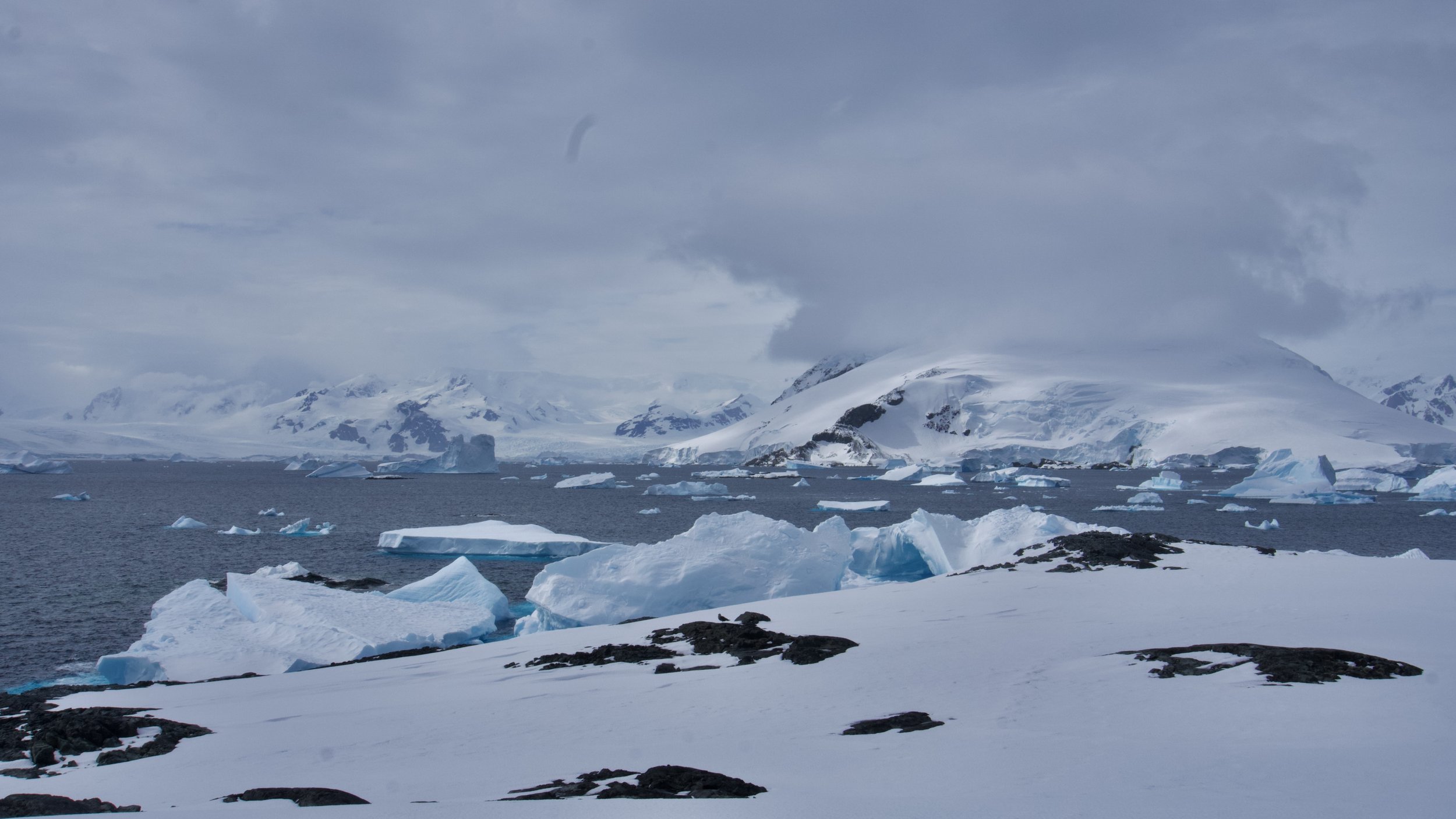Forecast interpretation and use in the field: A perspective from the tourism sector
Tom Harris is a mountain guide with experience working for both the United States Antarctic Program and Antarctica New Zealand, in search and rescue and field safety roles. Most recently, his guiding work has taken place aboard tourism vessels around the Antarctic Peninsula, South Georgia, and Greenland. He has also worked extensively in the outdoor safety space in New Zealand for the New Zealand Mountain Safety Council on alpine initiatives. He currently works for Envirolapse, as a strategic advisor for their remote camera and sensing technology in extreme environments for the purpose of safety and research. Tom was a recent attendee of the PCAPS Open Session in Cambridge, UK. Tom believes the topics discussed during the Open Session have great potential to improve forecasting products for the tourism industry in the polar regions, which currently faces challenges.
Tom wintering at McMurdo Station. Photo credit: Stephen Allinger
As field practitioners in polar regions, our approach to forecasting products may differ to what forecasters expect. While I definitely cannot speak to the practices of all tourism operators, I can provide some insight with regards to my - and some colleagues' - experience, which I believe is relatively common across the sector. With PCAPS' broad influence and expertise, there is great potential to address some of the issues being faced for expedition leaders and guides onboard polar vessels in order to improve safety and logistical outcomes.
First, it is important to understand the pressures, constraints and decision-making mindset of expedition leaders and guides. In short, staff are extremely time constrained, particularly those in decision-making positions. They are also under enormous pressure to meet guest expectations, meaning there are no days off. The leadership team is always looking for the best opportunities based on site availability (with ever more fellow tourism vessels), onward journey plans, staff management, and of course, weather. These decisions are often made last-minute as a response to constantly changing information.
Weather rolling in south of the Antarctic Circle. Photo courtesy of Tom Harris.
Expedition staff are intelligent, hard-working and skilled individuals, but they are not, usually, meteorologists. Some have a background of professional meteorology training (such as us Mountain Guides and Helicopter Pilots), but most have either learned on the job or through self-education.
Most expedition staff, especially leadership, are looking for information that allows for:
Convenience/ease of use
Quick comparison for variety of sites
Easy interpretation
Interpretation by guests, to justify decisions
With that in mind, perhaps it comes as less of a surprise that the primary weather forecasting tool utilised is Windy (and other products such as yr.no).
As you’ll be aware, these tools, while useful, have limitations. They don’t incorporate human interpretation and are influenced by weather station, satellite, and historical data, which is far less available in Antarctica. They also don’t forecast local effects well in remote regions like Antarctica, or even New Zealand!
These limitations are not always well understood by expedition staff. There have been numerous occasions of pixel peeping cloud cover or precipitation layers in Windy to nail a 4-hour weather window for a Zodiac cruise or Helicopter flight with marginal weather. This in itself doesn't make much sense given these models are not usually accurate on these spatial and time scales! But there is often a feeling of needing to make a decision, so people feel that it is better to use the information you have and go from there.
There are of course other forecasting services such as those used by the National Antarctic Programs, but the expedition teams are: not aware of them, find them time consuming to use, difficult to interpret, or seemingly not as easy to make their decisions with, accurate or not.
Working for the New Zealand and American Antarctic Programs, bespoke human-interpreted products are usually available. They are not as shiny, simple-to-use, or easy to compare multiple sites to make last-minute decisions. But that isn't what those programs need. Their plans, or goals at least, are known further in advance; postponing or cancelling is always an option, and they have time to review more complex information and ask questions. They also usually visit familiar sites where local effects are better understood.
Vessel and icebergs south of the Antarctic Circle. Photo courtesy of Tom Harris.
So, is the present situation a problem for tourism vessels? In my experience and that of my colleagues, yes.
There have been notable instances where poor interpretations have led teams into serious traps. I personally witnessed such an occasion in South Georgia; a case of commercial pressure pushing us to incorrectly accept a "too good to be true" Windy forecast.
Due to local Katabatic effects, hundreds of thousands of dollars of equipment was destroyed, we had a multi-hour stranding for over 100 guests, and had the potential for staff injury or loss-of-life.
A human-interpreted forecast would likely have advised against our activity on that day. Ultimately we got out unscathed, but the psychological harm to staff was palpable. There are more of said incidents.
Ultimately I believe a solution to this situation lies behind answering one or both of the following questions:
Can we provide better quality, human interpreted forecasting to those on tourism-vessels such that they are practical, understood, and therefore used?
How can we educate expedition staff on model based forecast limitations, not to eliminate their use, but rather to make best use of them, and know when to trust or be skeptical?
Zodiac cruising in West Greenland. Photo courtesy of Tom Harris.
I believe PCAPS is well placed to answer these questions and act as a bridge between the polar tourism industry and forecasting entities, with the goal of improving safety and logistics in the polar regions. Polar tourism is an ever-growing industry that welcomes guests from all over the world, making this is a great opportunity to have a meaningful, and visible, impact.





